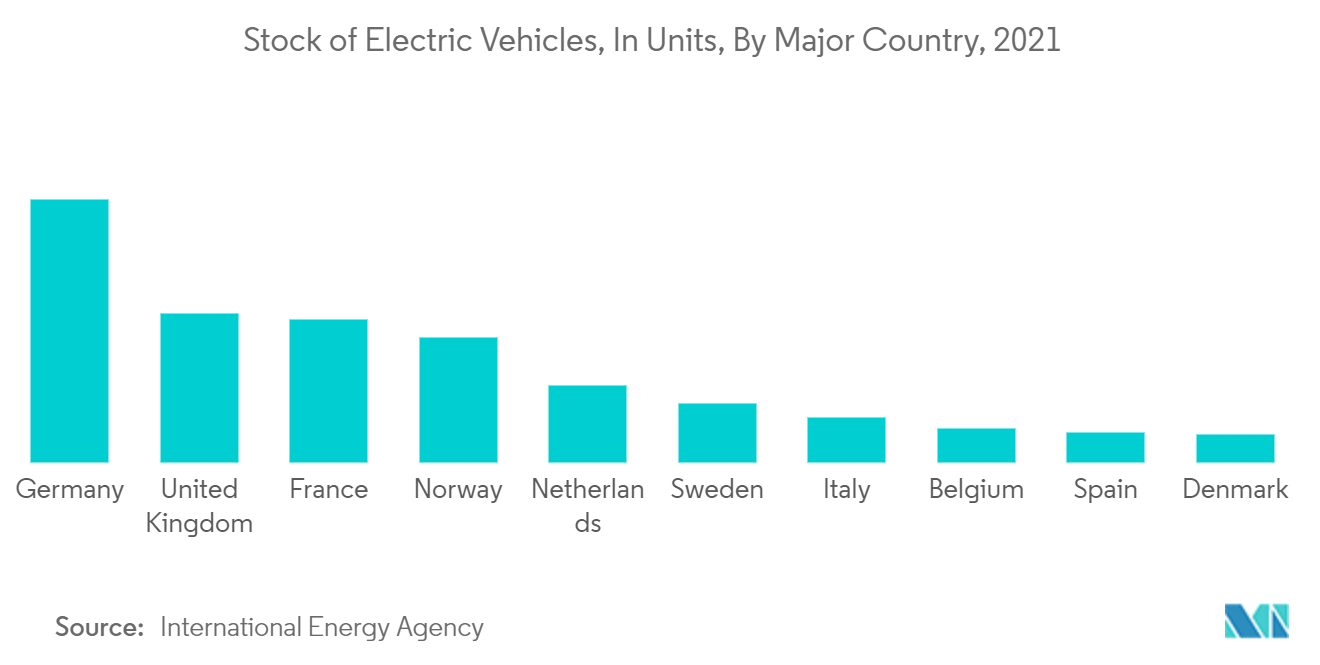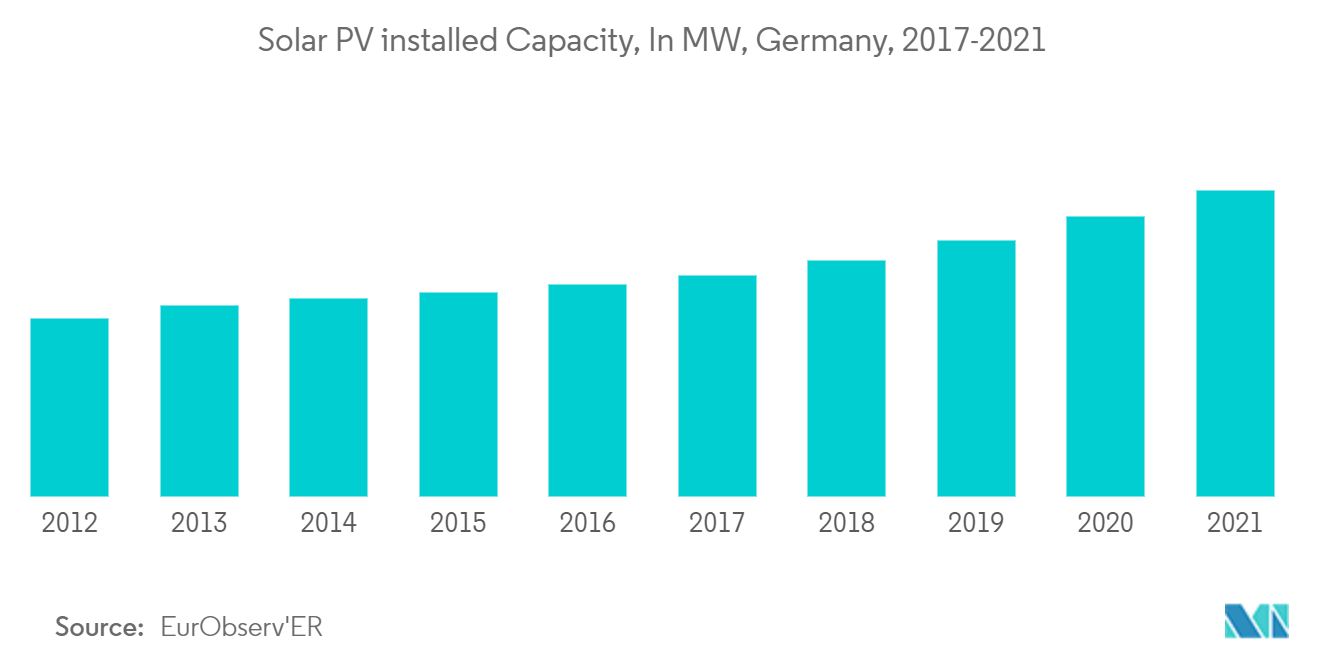Market Trends of Europe Battery Cell Industry
This section covers the major market trends shaping the Europe Battery Cell Market according to our research experts:
The Automotive Battery Segment is Expected to Dominate the Market
- In recent years, Europe witnessed significant growth in EVs and the demand for EVs is expected to propel during the forecast period owing to factors like increasing investment in the sector due to favourable government policies and various incentives for electric vehicle battery manufacturing players.
- Vehicles with internal combustion (ICE) are getting replaced with battery-powered vehicles. Due to growing environmental concerns, technology has been shifting toward electric vehicles (EVs). Mostly, lithium-ion batteries are used in Evs as they provide high energy density, low self-discharge, less weight, and low maintenance.
- In January 2021, the Commission approved a second Important Project of Common European Interest to support innovation and research in the battery value chain. The project is called 'European Battery Innovation' and was jointly prepared and notified by Belgium, Croatia, Austria, Finland, Germany, France, Greece, Poland, Italy, Slovakia, Sweden, and Spain. In the coming years, the twelve countries are expected to provide up to EUR 2.9 billion in funding, which is likely to unlock around EUR 9 billion in private investments.
- For ICE vehicles, the lead-based battery is widely used and is expected to continue to be the only viable mass-market battery system for the foreseeable future. Lithium-ion batteries still require higher cost reductions for SLI applications to be considered a viable mass-market alternative to lead-based batteries.
- Lithium-ion battery systems propel plug-in hybrid and electric vehicles. Due to their high energy density, fast recharge capability, and high discharge power, lithium-ion batteries are the only available technology that meets OEM requirements for the vehicles' driving range and charging time. The lead-based traction batteries are not competitive for full hybrid or electric vehicles due to their lower specific energy and weight.
- All these development are anticipated to increase the sales of battery cells in the automobile segment during the forecast period.

The Germany to Dominate the Market
- The automotive industry plays a vital role in the German economy. The automotive industry in Germany is witnessing growth in electric cars, as seen in the chart beside. Electric car battery sales are expected to grow to USD 60 billion by 2030. Thus, with the growth in the adoption of electric cars, there exists significant growth potential for battery manufacturing and prismatic battery cells.
- Thus, it becomes essential for Germany to ensure efficient and cost-effective battery manufacturing, thereby maintaining a firm hold over the entire EV value chain. Hence, Germany considers batteries one of the critical elements to ensure industrial prosperity.
- To avoid loss of value addition in the booming EV market to other countries, such as the United States, which offers a digital platform for autonomous driving, coupled with Artificial Intelligence (AI), and China, which is into mass manufacturing of batteries, Germany has been making efforts to build domestic battery manufacturing capabilities.
- Moreover, there has been large-scale adoption of solar power in the country. According to Germany's Renewable Energy Act (EEG), the country has set a target of achieving a share of 40-45% of renewable energy sources out of the total energy consumption in the country by 2025. As a result, there has been significant growth in solar installed capacity, as seen in the chart beside.
- As Germany invests heavily in developing solar energy across all segments, such as residential, commercial, and utility, all three segments are expected to see sustained growth during the forecast period. In September 2021, Germany registered the addition of 406.4 MW of new PV capacity, of which more than 321.6 MW was attributable to rooftop and ground-mounted systems up to 750 kW in size and built under the FiT (Feed-in-Tariff) scheme.
- Due to this development Germany is expected to to dominte the battery cell market in Europe during the forecast period.

